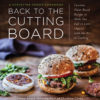So much excellent material is available on book marketing, and so, rather than rehashing that, I’d like to throw out a few ideas that I think are important but I don’t hear emphasized as much as they should be.
1) Books can be successfully marketed over time
It seems to me that much of the industry is very focused on what I call the “big bang” model of book marketing, by which I mean the no-holds barred effort to get huge distribution on publication date, get major media in the first few months after publication (including a national book tour) leading to a big early success and having the book modeled by the bookstores. The big bang approach is driven by hope and fear: the hope of getting on the New York Times bestseller list and the fear of the books returning rapidly if the title isn’t selling well.
But most books don’t get major distribution or major national publicity or hit the major lists. This includes many excellent books by significant authors that go on to sell a great many copies. For example, our book The China Study, now approaching 400,000 sold, received a modest sell-in and never got major publicity. The China Study grew continuously due to the author’s unflagging efforts, as well as an extensive grass roots (mostly online) campaign.
We have a few authors with the platform and the resources to support a big bang approach (you know who you are) and for these authors the big bang approach might make sense (but it always risky). However for most authors, it’s simply not practical, for a number of reasons.
Most authors don’t have the track record to command huge buy-ins, no matter how much we push the book. Most authors are not ready to spring on to Oprah or The Today Show. Most authors need to craft their message, gain experience, and build a resume of successful radio, on-line hits, etc., growing in skill and visibility over time, allowing larger and larger bookings. Beyond that, timing is everything. We all know authors that got lucky with a big media event that tied beautifully into their book. If you have a multi-year campaign, not a three month campaign, you have much more opportunity for timing to go your way.
Another problem with the big bang approach is that it tends to push authors down the path most taken, and pushes aside the many less popular techniques that can sell books. It’s important to recognize that, to butcher Tolstoy, unsuccessful books are all alike; every successful book is successful in its own way. There are many, many ways for books to be successful. The support of a few critical thought leaders, the creation of a surprisingly effective cover, the adoption by a fan group or corporation, building a local hit in the author’s home city, the enthusiasm of one celebrity, a particularly clever facebook app, the excitement of a non-bookstore retail chain – these are just a few of many lucky breaks that can make a book.
These other aspects of book marketing, less obvious than a book tour or getting on Oprah, take time and thought, trial and error. Building a blog presence or prominence as a speaker takes time. Pitching the media month after month, with new hooks as new events change their interest, takes time.
There are some obstacles. Bookstores will return books that aren’t selling, so your initial campaign, even if isn’t “big bang,” should be effective enough to maintain bookstore interest (this is a lot easier if the initial distribution is moderate.) So big bang isn’t the only option for maintaining interest. With good but not exceptional sales in the early months, which maintain and grow over time, a book will be modeled by the chains, chosen for co-op, etc. This happens all the time.
But even if the bookstores lose some interest in a book, on-line sales can drive a lot of volume. I’ve heard estimates that online book sales are roughly 5-10% of book sales, but every book, every campaign, has a different profile. For your book, online sales can be 50%, if your book and your campaign support this. That doesn’t mean you won’t move a lot of copies. For The China Study, something over 1/3 of all sales have been on-line, and that book is very well-represented in bookstores and retail outlets nationally.
And on-line success, or local success, can be parlayed into better physical distribution, even a year or two after launch. For a book/author that is really starting to make an impact after a year or two, a modestly updated edition can reintroduce the book to the trade, and pump up physical distribution. So, no, a book isn’t dead if it isn’t selling in the bookstores in the first few months; it can be revived.
2) Try a lot of things, modestly, and pay attention.
It’s very very easy to fall into a cookie-cutter mode of book marketing. In fact, if you have too many books and too few marketers (a common situation) it’s hard not be cookie cutter if you want to get anything done at all. But I think this is a big mistake.
Successful books are made many different ways, and you know less than you think you do about what will work for any particular book (see my post on The Black Swan.)
The number of marketing ideas one can pursue is limitless, and most of them are not publicity (this is why we call our folks marketers and not publicists, even though they pitch a lot of media). Right now I’m working on the marketing plan for our upcoming book, The Community College Guide, the only practical guide to attending community college (believe it or not). Here are a few initial marketing ideas:
1. Radio blitz in the New York metropolitan area, where the authors both live
2. Pitching an op-ed piece, to high school papers nationally, on the merits of community college and/or an op-ed piece to community college papers on national leaders who attended community college
3. Buying co-op in community college bookstores
4. Mailing copies of the book to every high school guidance counselor where more than 50% of the graduates attend community college
5. Facebook quiz – Is community college right for you?
6. Pitching radio interviews with community college radio stations
7. New York area speaking tour at community colleges with a talk “Why Community College is the Place to Be”
8. Attend a community college conference and conduct book giveaways
9. Internet campaign aimed at community college sites
10. Offer a free download of the pdf of the book to every college counselor in the country
11. Google ads for the phrase “community college”
12. Hire community college reps nationally to promote the book on campus
This is just a start. Some good brainstorming should yield 20-30 reasonable ideas, maybe 10 of which are pursued in the first round. Each idea should be pursued modestly (otherwise it’s too expensive) but – and this is key – careful attention should be paid to what’s working and what’s not. The campaign should evolve continuously, dumping what’s not working, growing what is, and starting trying new things based on what’s learned.
And, ideally, the campaign should go on for a least a year. If it’s successful, it should continue for years. Of course, publishers can’t put full energy behind a book for years (at least not many of their books), so it really falls to authors to drive a long-term campaign.
This brings us to my next point.
3) Authors should be the ultimate drivers of the marketing for their books.
Many authors, frustrated with their publisher’s marketing efforts, come begrudgingly to this conclusion. That’s not what I’m talking about.
In the traditional publishing deal, royalties are designed to roughly equal publisher profits, so that, in theory, the publisher and the author make about the same from a successful title. In my experience, that’s about right, not counting unearned advances (which can skew the equation in the author’s favor).
But putting the money split aside, the reality is that the author has far more at stake with the success of his or her book than the publisher does. Part of this is that the publisher has many books, and the author just one. But even more, the author is building a writing career. The success of the book yields not just the royalties from that book, but a dramatically improved advance and distribution for the next book, and the book after that. In the days when authors had long-term careers with a publisher, this might not have mattered. But authors move publishers all the time, and even if the author stays with the publisher, his or her agent will ensure that the advance rises considerably.
None this is to say that publishers should shift marketing responsibilities to the authors; publishers MUST market their books. But there is a mismatch of incentives – authors have much at stake – that should be acknowledged.
In my opinion the answer is a creative partnership between author and publisher that we are evolving toward at BenBella. In the first phase of marketing (traditionally the only phase) of the first 3-6 months, the publisher should take the lead. The publisher, with the author, should come up with a list of marketing ideas to test (see the previous point). The publisher should drive the implementation of this marketing plan, with the author actively pitching in. The more the author is willing to do, the more things can be tried and the more potential for success the plan has (I’ve noticed that many authors are delighted to help market their book, but have no idea what to do).
At the end of the first phase, the book’s success can be evaluated (although of course the evaluation is ongoing throughout the first phase), and the results will determine the strategy for the next phase, which is now driven by the author.
In general, a resourceful author can do almost everything that a publisher can do (including successfully pitching the media, which many authors do successfully, although a lot of publicists will discourage it). But the author shouldn’t be on his or her own; the publisher should play a support role, providing advice, aid, resources, etc. In general, we are delighted to continue to put time and resources behind a book, long after pub date, if the author is doing the same, and if the book is having some modicum of success.
We are also working on providing training for authors to make them more effective in both phases of the marketing. Author training, which includes media training, pitch training, defining the message and the target market, etc., can, in my view, make an author much more effective for this book and future books.
4) Consider your niche.
One huge shift the Internet provides is the ability to effectively market to niche audiences. One of our specialties since BenBella was founded has been creating books with tremendous appeal to fairly small niche markets. For example, our book Finding Serenity was aimed at fans of the television show Firefly (canceled after 13 episodes). National publicity was not an option for this book, but in-depth grassroots marketing, primarily on the internet, was. This led to the embracing of the book by the wonderful Browncoats (Firefly fans), and, in the end, sales of over 30,000 books into a fairly narrow niche market.
However, even non-niche books can benefit from niche thinking. While authors always try to position their books for the broadest possible market, it’s worth thinking about the narrowest possible market – what is the group most likely to embrace your book with the most enthusiasm? This is the group to go after.
There are always more marketing ideas than resources to pursue them, so focusing on the niche markets is a way to focus your efforts. It’s also a good way to generate word of mouth (more on this below). A person who loves your book is worth ten who like it, and the best place to find the folks who will love your book is your most narrow target market. You also want to identify influencers in this group to aggressively market to.
You can always expand outward from your niche, but if no one gets excited about your book, it’s a much more difficult road.
5) In the end, it’s all about word of mouth.
There are books, primarily impulse purchases, that succeed without much word of mouth, but these are rare enough to ignore. For most books, word of mouth is everything. Word of mouth sales, in my very practical definition, are sales that took place without any direct intervention on the part of the publisher. Sales that didn’t come from buying co-op or pitching the media or running a blog tour, but instead sales that came because someone heard about a book from someone’s blog (who you didn’t pitch) or a friend, etc. Word of mouth is important because it’s very hard to make money if all of your sales come directly from your marketing investment (publicity is “free” but it costs time and money to get).
All of the marketing you do is the kindling, and word of mouth is the logs. When the logs get going the fire is effortless. When you are keeping warm from kindling, you are working continually for modest results.
So word of mouth is essential but very mysterious in nature. It’s impossible to predict which books will really explode with word of mouth support, but it certainly has something to do with how well the book is written to appeal to its target market. No book excites everyone, and so it’s important to have a book that excites someone. For publishers this is primarily an acquisitions problem, but for authors there is a lot they can do in terms of testing their manuscript with sample readers and other methods of determining whether they are hitting their audience right.
So selling 5000 books in the first months is good, but you also have to consider who you are selling it to. A marketing campaign that sells 5000 books into the core target market – who will drive a lot of word of mouth – is more effective than one that sells 5000 into interested but less enthusiastic markets. This is easier said than done, but it is worth considering in the creation of a marketing plan.
So, in summary, I humbly suggest:
1) A long-term perspective on marketing each book
2) Trying lots of marketing ideas and watching what works
3) An author-publisher marketing partnership in which the publisher starts out driving, but eventually the author takes the wheel
4) Carefully consideration of niche marketing
5) Never forgetting that the end goal is to drive word of mouth, and all all marketing activities should keep this in mind
This is all easier said than done, but our big successes have all come when we’ve gotten at least some of this right.








Wow! Thank you! I always wanted to write in my blog something like that. Can I take part of your post to my site? Of course, I will add backlink?
Thanks! Yes of course you can!
What a wonderful inspiration for our own marketing plan! And a pleasant surprise to discover the publisher of The China Study (we’re huge fans :-).
Deeply grateful for your work, Glenn.